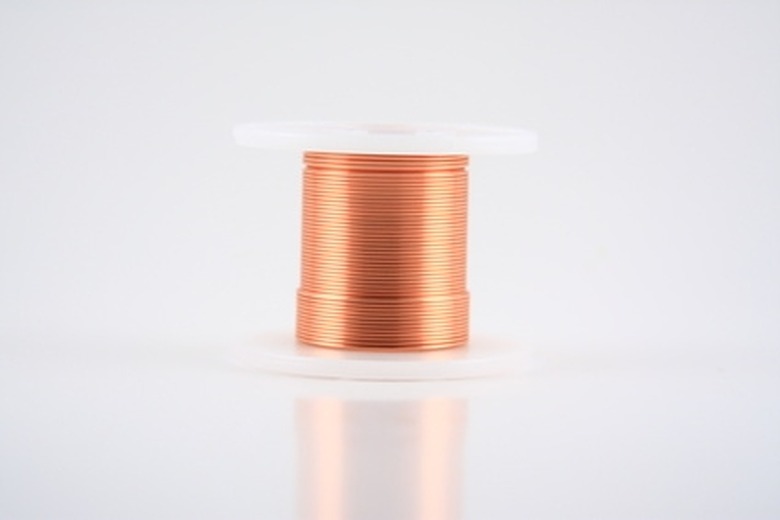How To Make An Electrical Wire
Electrical wire is typically made from copper, which is relatively inexpensive and conducts electricity extremely well. Silver is a slightly better conduction but is considerably more expensive. Copper is also a soft metal, which gives it an additional advantage in manufacturing. Most electrical wire is manufactured with the drawing process, which involves pulling the wire through successively smaller holes until you obtain wire with the thickness you desire. This technique is especially common with electrical wiring.
Step 1
Make the initial rod about 0.35 inches in diameter and treat the surface to remove any scales. Make the end narrow enough to fit through the drawing die. You can accomplish this by a variety of means, including hammering, filing or rolling.
Step 2
Select the proper die size. The die should be smaller than the wire but not so small that the wire will break when it is pulled. Typically, the surface area of small wire may be safely reduced by 20 percent while the surface area of larger wire may be reduced by up to 45 percent.
Step 3
Feed the wire through the die and grab it with a pair of pincers on the exit side of the die. Pull enough wire through the die to wrap it 2 or 3 times around a vertical drum.
Step 4
Attach the end of the wire to the drum with a clamp or vice and turn the drum on. The drum will rotate, pulling the wire through the die and onto the drum. The wire drawing machine will hold the die precisely in place while the wire is pulled through it.
Step 5
Ensure the drum rotates at a constant velocity to ensure the wire doesn't snag. The dies of harder metals such as steel may need to be immersed in a lubricant while the wire is being drawn. Slip the coil off the tapered drum once the draw has been completed.
Things Needed
- Copper rods
- Dies of various sizes
- Wire drawing drum
- Wire drawing machine
References
Cite This Article
MLA
Robinson, Allan. "How To Make An Electrical Wire" sciencing.com, https://www.sciencing.com/make-electrical-wire-5256958/. 24 April 2017.
APA
Robinson, Allan. (2017, April 24). How To Make An Electrical Wire. sciencing.com. Retrieved from https://www.sciencing.com/make-electrical-wire-5256958/
Chicago
Robinson, Allan. How To Make An Electrical Wire last modified March 24, 2022. https://www.sciencing.com/make-electrical-wire-5256958/
